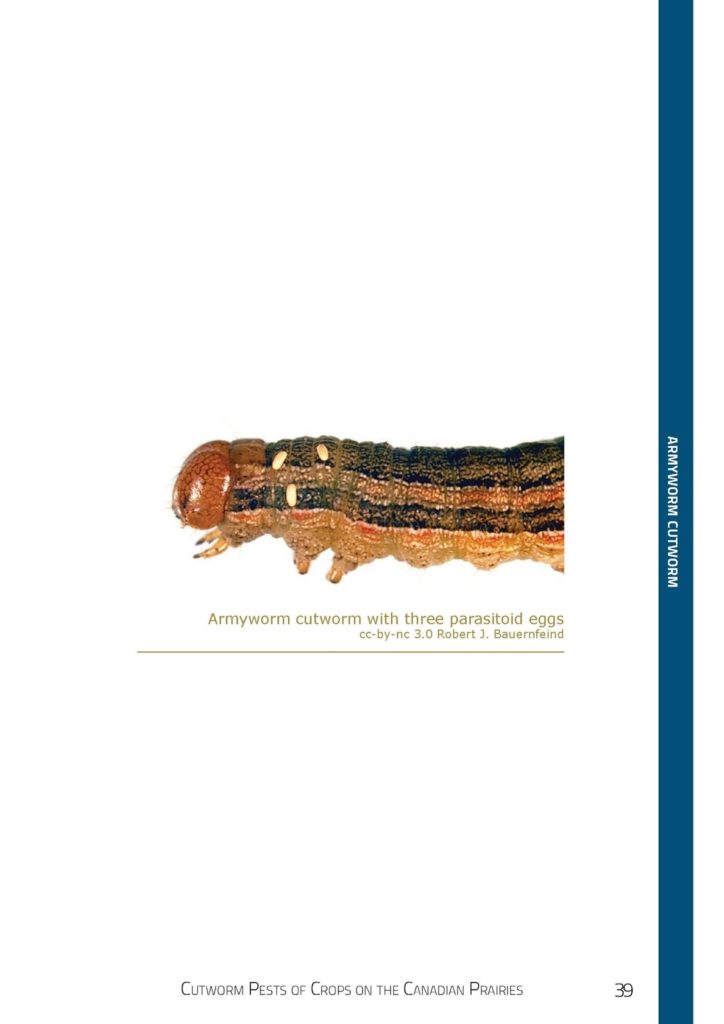Cutworms are part of Canadian agriculture on the Prairies. Most of the time they are of little concern but outbreaks do occur from time to time, causing significant economic damage if not controlled. Cutworm outbreaks can range from small patches of clipped or missing plants in individual fields to widespread areas with entire quarter
sections needing re-seeding.
Cutworm management starts with identification – knowing what species is at work in your fields helps unlock information
that improves cutworm scouting and management. Knowledge of cutworm biology, behaviour, preferred habitat, impacts of weather and interaction with its natural enemies will all improve scouting
techniques and pest management decisions for growers.
Just released, the Cutworm Pests of Crop on the Canadian Prairies – Identification and Management Field Guide describes the economically important cutworm pests in detail and provides the information needed to manage them. [Funding for preparation of this publication was provided by the Canola Council of Canada]
For more information and a download link, go to our Cutworm Field Guide.






